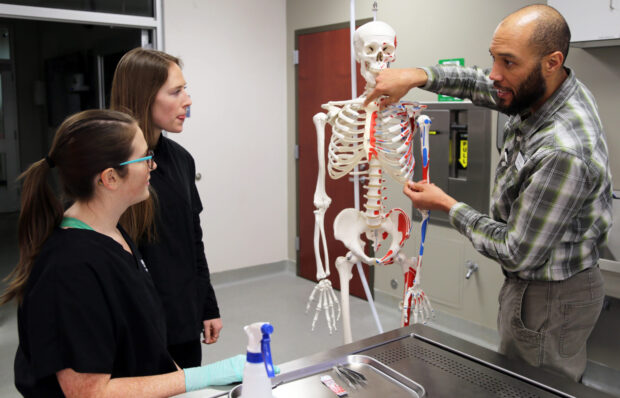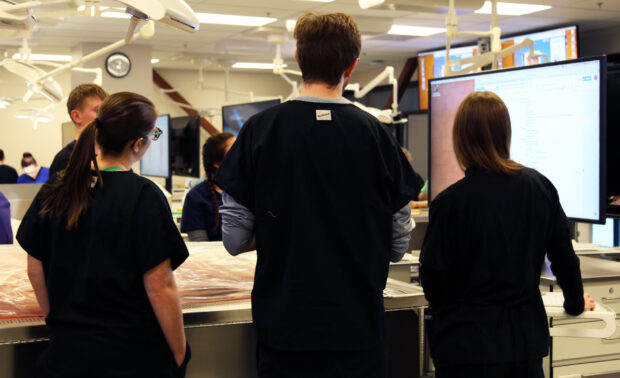Wearing blue scrubs and gloves, Angel Park dissects the pelvis area of a 70-year-old man who had a medical history of vascular dementia, atherosclerosis and hypertension. She isn’t a surgeon or doctor. She’s just a high school student.
Angel is part of the After School Anatomy Club at Idaho State University. The club provides high school, undergraduate and graduate students an opportunity to learn anatomy through dissection.
“This is eye-opening,” said the Renaissance High School junior.
Angel dreams of a career in biotechnology and research and wants to study body tissue. The club offers her hands-on experience before entering college.
“This will make a mark on my resume,” she said. “I won’t experience this in the classroom at school.”
The gross anatomy laboratory at Idaho State University’s Meridian Health Science Center allows students to observe and dissect tendons, muscles and body parts they study in class. Students can see firsthand how the body functions and interacts with each other through an experience that a textbook or simulation cannot replicate.
“Donors touch hundreds and thousands of lives,” said Noah Harper, an anatomist at Idaho State University. “Cadavers are a tremendous impact on our healthcare system.”

The laboratory is filled with models of body parts, various hand instruments and donated bodies that are preserved in shiny, metal tanks. The embalmed donors come from the University of Utah’s Body Donor Program. Students will work with 16 donors this year. The goal is for students to create a professional dissection to highlight certain anatomical structures.
“We are leading the way for laboratory opportunities that is a blend of technology and classic dissection for anatomical sciences,” Harper said.
Thirty two students are enrolled in the club and paired into groups called ‘learning pods’. These groups consist of a high school, undergraduate and graduate students. The purpose is to combine learners at different levels for mentorship.
“I actually learn from the high school students,” said Audrey Shipley, a physician assistant student at Idaho State University. “It is incredible at such a young age these students are exposed to this type of learning.”
The club is a semester long and meets three nights a week for two and half hours. Eight high school students from Boise, Meridian and Nampa are enrolled in the club free of charge. Students don’t receive credit for the club, but gain experience working in a college-level laboratory.
“This is fascinating,” said Solomon Cram, a senior at Ridgevue High School.
High School students must submit a cover letter, resume, letter of recommendation and transcripts for acceptance into the club. Nearly 35 students apply each semester with only eight spots available. Click here to learn how to apply for the club.

